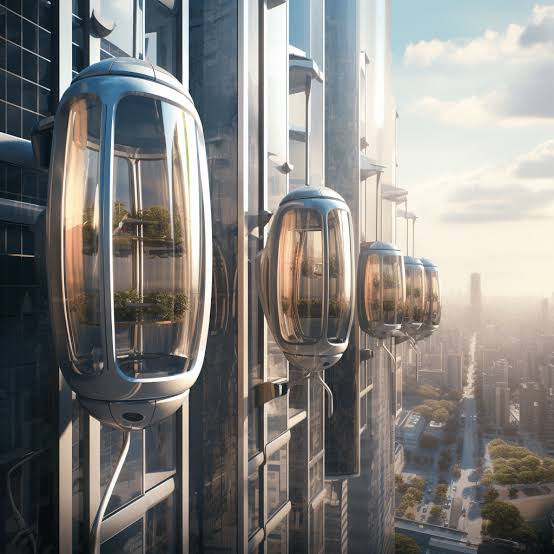Key Takeaways
• Understand the integration of smart technologies in elevators.
• Learn about the benefits of intelligent elevator systems.
• Explore real-life applications and advancements in the field.
Table of Contents
1. Introduction to Smart Elevators
2. Key Features of Intelligent Elevators
3. Benefits of Smart Elevator Systems
4. Real-world Applications
5. Challenges and Solutions
6. Future Trends in Elevator Technology
Introduction to Smart Elevators
With the rapid advancement of technology, the building industry is experiencing a significant shift toward more innovative solutions. Intelligent elevators lead this change by offering enhanced features, safety, and efficiency. These advancements transform urban infrastructure, providing seamless vertical transportation within buildings and integrating with other innovative building technologies.
Innovative elevator systems encompass much more than moving people between floors. They increasingly incorporate predictive maintenance, energy-efficient operations, and innovative safety features.
Key Features of Intelligent Elevators
Smart elevators have various advanced features designed to enhance user experience, improve safety, and increase efficiency. These features transform how elevators are perceived and utilized in modern buildings, providing an integral service that significantly impacts building operations. Companies involved in the escalator parts supply Niles IL industry are tapping into these advancements, ensuring that essential components are as advanced as the technology they support. This alignment allows for smoother operations and increased reliability in everyday use.
• Predictive Maintenance: Sensors and IoT technology allow these elevators to predict and address maintenance issues before they become critical. This proactive approach reduces downtime and ensures continuous, reliable operation, extending the lifespan of the elevator equipment.
• Destination Control Systems: These systems optimize elevator operation by grouping passengers on the same or nearby floors, thus reducing wait times and energy consumption. By minimizing unnecessary stops, they increase the overall efficiency of building transportation.
• Energy-efficient Operations: According to Future Buildings, features like regenerative drives can capture and reuse energy, leading to substantial energy savings. This sustainability effort not only reduces costs but also contributes to environmental conservation.
• Advanced Safety Protocols: Enhanced emergency communication systems and real-time monitoring ensure a safer ride for passengers. These protocols provide critical support in emergencies and help prevent accidents, ensuring passenger safety at all times.
Benefits of Smart Elevator Systems
Adopting intelligent elevator systems has many benefits, making them an excellent choice for modern buildings. These benefits go beyond mere transportation and impact the overall functioning and safety of the building and its occupants.
• Enhanced Safety: Thanks to predictive maintenance features, smart elevators can detect potential malfunctions or issues before they escalate. This allows for timely interventions, prevents significant breakdowns, and ensures continuous, safe operation.
• Improved Efficiency: Destination control systems help minimize wait times and ensure smoother, faster rides by grouping passengers logically. This efficient approach saves time and enhances the user experience by providing quicker and more reliable service.
• Energy Savings: Technologies like regenerative drives not only save energy but also contribute to sustainability efforts within the building. By reducing energy consumption, intelligent elevators help lower operational costs and support green building initiatives.
Real-world Applications
The implementation of intelligent elevators is becoming more common across various sectors. They are increasingly recognized for their ability to handle high traffic efficiently, making them particularly valuable in high-rise buildings where traditional elevator systems may fall short.
Smart elevators are now a staple in commercial buildings, residential complexes, hospitals, and airports. Their efficient management of traffic flow and enhanced safety features make them an attractive choice for various applications. For example, according to Reuters, intelligent elevators are being utilized in some of the tallest buildings globally to manage people’s movement more effectively. These systems reduce congestion and ensure faster, smoother, and safer vertical transportation, demonstrating their practical benefits in real-world scenarios.
Challenges and Solutions
Despite their numerous benefits, innovative elevator systems face challenges that need addressing to realize their full potential. These challenges are manageable and offer opportunities for further innovation and improvement in the industry.
• High Initial Costs: The advanced technology and integration required for smart elevators can be costly upfront. This initial investment can be a barrier for some building projects, but the long-term benefits often outweigh the initial expenditure.
• Integration Complexities: Integrating smart elevators with older buildings’ structures and systems can be challenging. However, the ongoing development of modular systems is helping to overcome these challenges. These systems are designed to be easily installed and scaled, reducing the complexity and cost associated with retrofitting existing buildings with innovative elevator technology.
Continuous innovations are turning these challenges into opportunities. For instance, modular systems simplify installation and scaling processes. As highlighted by Buildings.com, advancements in IoT and automation are making it easier to integrate and maintain smart elevators, even in older buildings. These innovations pave the way for the broader adoption of intelligent elevator systems.
Future Trends in Elevator Technology
Several trends are shaping the future of intelligent elevator systems. The need for greater efficiency, sustainability, and user-centered design in modern buildings drives these trends.
• Eco-friendly Designs: Increasing focus on sustainability drives the development of more energy-efficient elevator systems. These systems use less energy and incorporate eco-friendly materials and technologies, supporting the broader green building movement.
• AI and Machine Learning: Future elevators will leverage AI further to enhance predictive maintenance, safety, and operational efficiency. AI-driven systems can analyze vast amounts of data to predict issues before they occur and optimize elevator operation in real time.
• Smart Integration: As part of the broader smart building ecosystem, elevators will communicate seamlessly with other building systems, offering a holistic smart experience. This integration will enhance the building’s overall efficiency and user experience, making it more responsive to its occupants’ needs.
As urban landscapes continue to evolve, the demand for smart elevators is set to grow. Innovations in this field promise to make our buildings safer, more efficient, and more sustainable, contributing to developing more intelligent, more livable cities. The ongoing advancements in intelligent elevator technology are transforming how we move within buildings and design and operate the buildings themselves.









